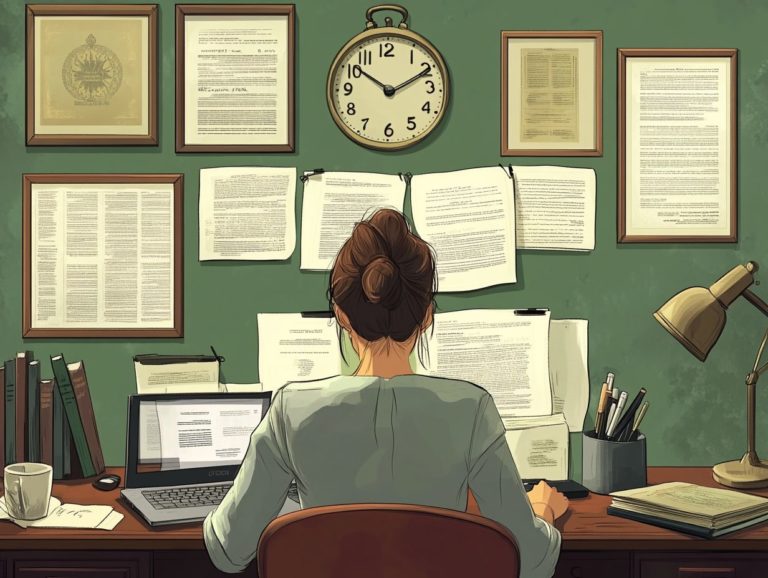What Is Fair Use in Copyright Law?
Copyright law is essential for safeguarding creative works. However, grasping its intricacies can be quite a challenge.
Central to this legal framework is the principle of “fair use,” which permits limited use of copyrighted material without requiring permission.
Join us as we explore the fascinating world of copyright law and uncover its secrets! This article offers a straightforward explanation of fair use and outlines the key factors that influence it.
We will share real-life examples and present best practices to help you navigate the complexities of fair use, ensuring that both creativity and the rights of others are well protected.
Contents
Key Takeaways:
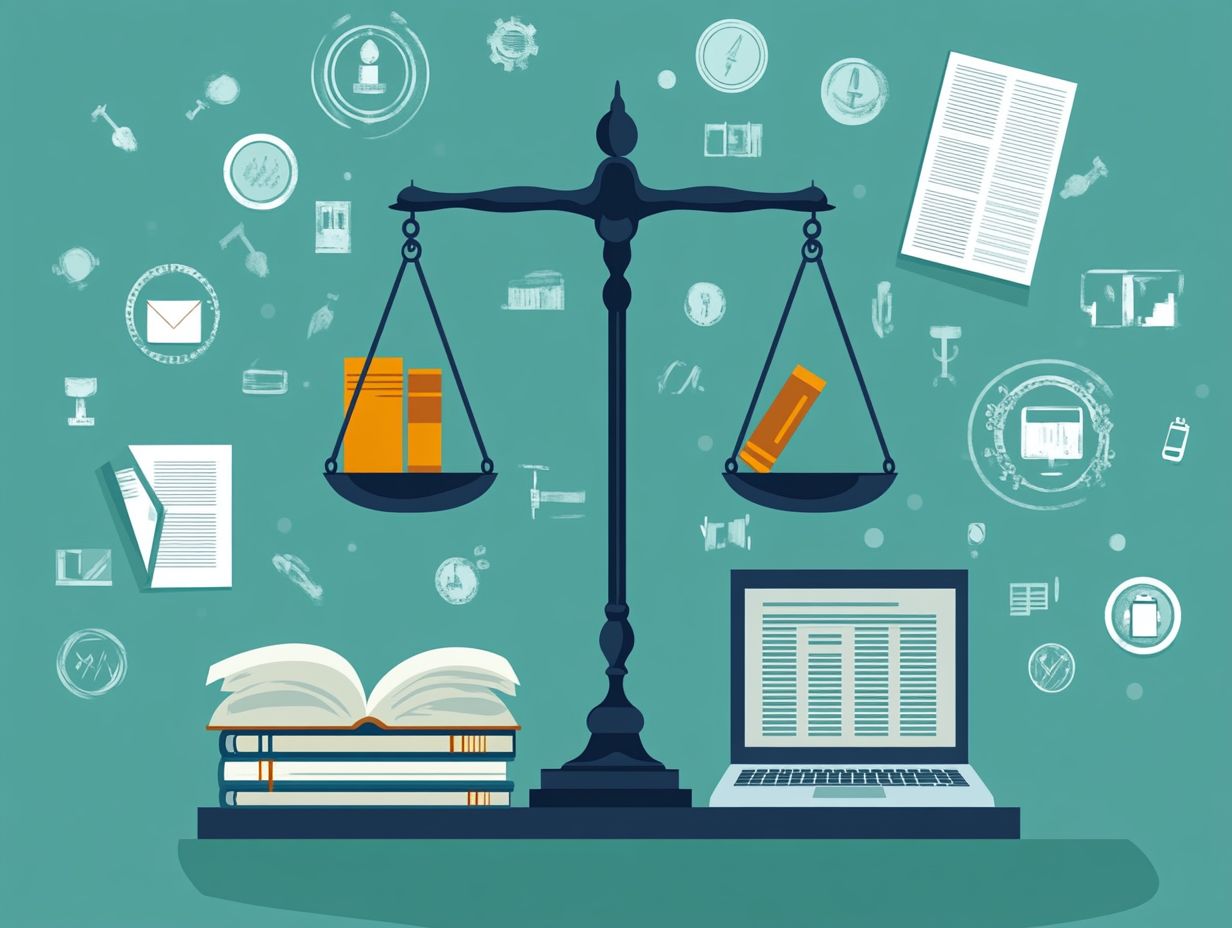
Fair use allows limited use of copyrighted material without permission. Determining fair use involves considering four main factors: purpose, nature, amount, and market effect.
Understanding Copyright Law
Copyright law serves as a vital framework designed to protect the rights of creators and copyright holders over their original works.
This system enables you to maintain control over the use of your artistic creations. It ensures you receive both recognition and economic rewards from your creative efforts.
Copyright law balances the needs of creators and the public, promoting creativity while mitigating potential market harm.
Through a dynamic blend of statutory law and evolving judicial decisions, copyright law continuously adapts to address the unique challenges posed by each case.
Definition and Purpose
The essence of copyright law lies in protecting the artistic integrity of original works while balancing the rights of creators and the public.
This legal framework safeguards the intellectual property of artists, writers, and musicians. It also enriches the cultural landscape by fostering creativity and innovation.
By ensuring that you, as a creator, can enjoy the rewards of your hard work, copyright law cultivates an environment where original ideas can thrive.
It also offers exceptions that enable the public to engage with creative outputs. This allows society to benefit from diverse artistic expressions without encroaching on the rights of their creators.
What is Fair Use?
Fair use stands as a vital principle in copyright law, permitting the limited use of copyrighted materials without seeking permission from the copyright holder. This doctrine is particularly relevant when the use is transformative, educational, or serves a greater public interest.
Understanding fair use enables you to navigate the complexities of copyright while harnessing creativity and knowledge for broader purposes.
Explanation of Fair Use
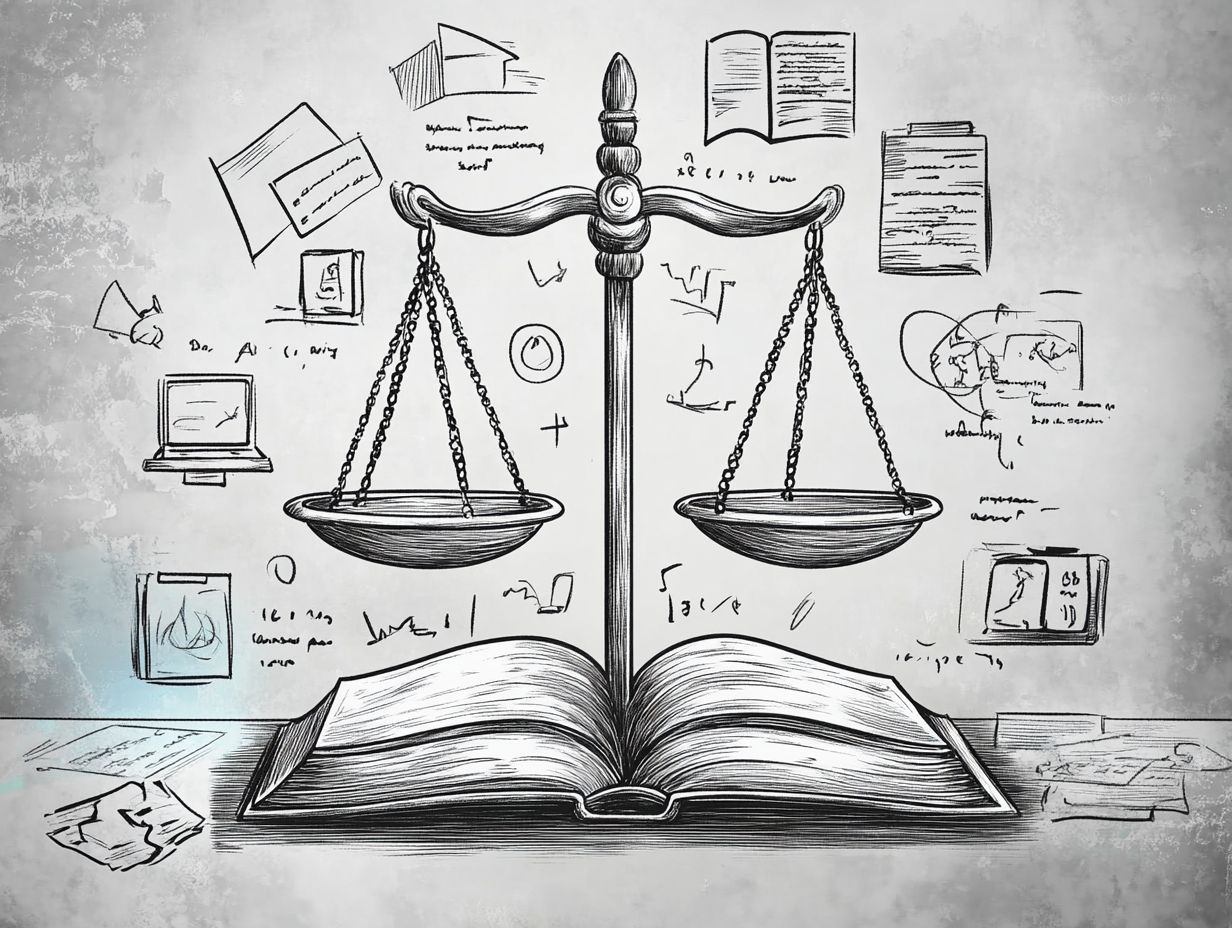
Fair use enables you to utilize copyrighted material without seeking permission for purposes like commentary, criticism, news reporting, or education. This concept is vital in fostering creativity and supporting educational efforts.
It establishes a legal framework that allows you to draw from existing works to create new interpretations.
For example, you might use a brief film clip in a classroom to illustrate cinematic techniques, or a critic could weave snippets of a newly released album into their review for deeper analysis.
In the digital landscape, bloggers often reference articles and images to discuss current events or cultural trends. This showcases how fair use encourages innovation and enriches public discourse while respecting the rights of original creators.
Factors to Determine Fair Use
The determination of fair use hinges on a nuanced four-factor test. This test assesses:
- The purpose and character of your use
- The nature of the copyrighted work
- The proportion of the work you ve utilized in relation to the entire piece
- The potential impact your use may have on the market value of the original work
Guidelines and Considerations
Understanding fair use guidelines helps you navigate copyright law. This will assist in deciding if a specific use qualifies as fair use.
This critical analysis involves examining various factors, such as the purpose and character of your use whether it s for commercial gain or educational enlightenment.
The transformative nature of your use how it changes the original work plays a pivotal role in these assessments. Landmark case law, like Campbell v. Acuff-Rose Music, Inc., demonstrates how courts evaluate whether your secondary use adds new meaning or perspective to the original work.
When considering fair use, it s essential to weigh the amount and substantiality of the portion you re using in relation to the copyrighted material. You should also consider the potential impact your use may have on the market for the original work.
Making informed decisions in this arena requires a thoughtful approach to these critical components.
Examples of Fair Use Cases
Exploring examples of fair use cases reveals how courts have interpreted and applied the fair use doctrine across diverse contexts.
Consider the landmark cases of Campbell v. Acuff-Rose and Harper & Row v. Nation; these pivotal rulings have played a crucial role in defining what constitutes transformative use.
You ll find that these cases illuminate the nuanced legal landscape surrounding fair use, providing valuable insights into its application.
Real-life Scenarios and Outcomes
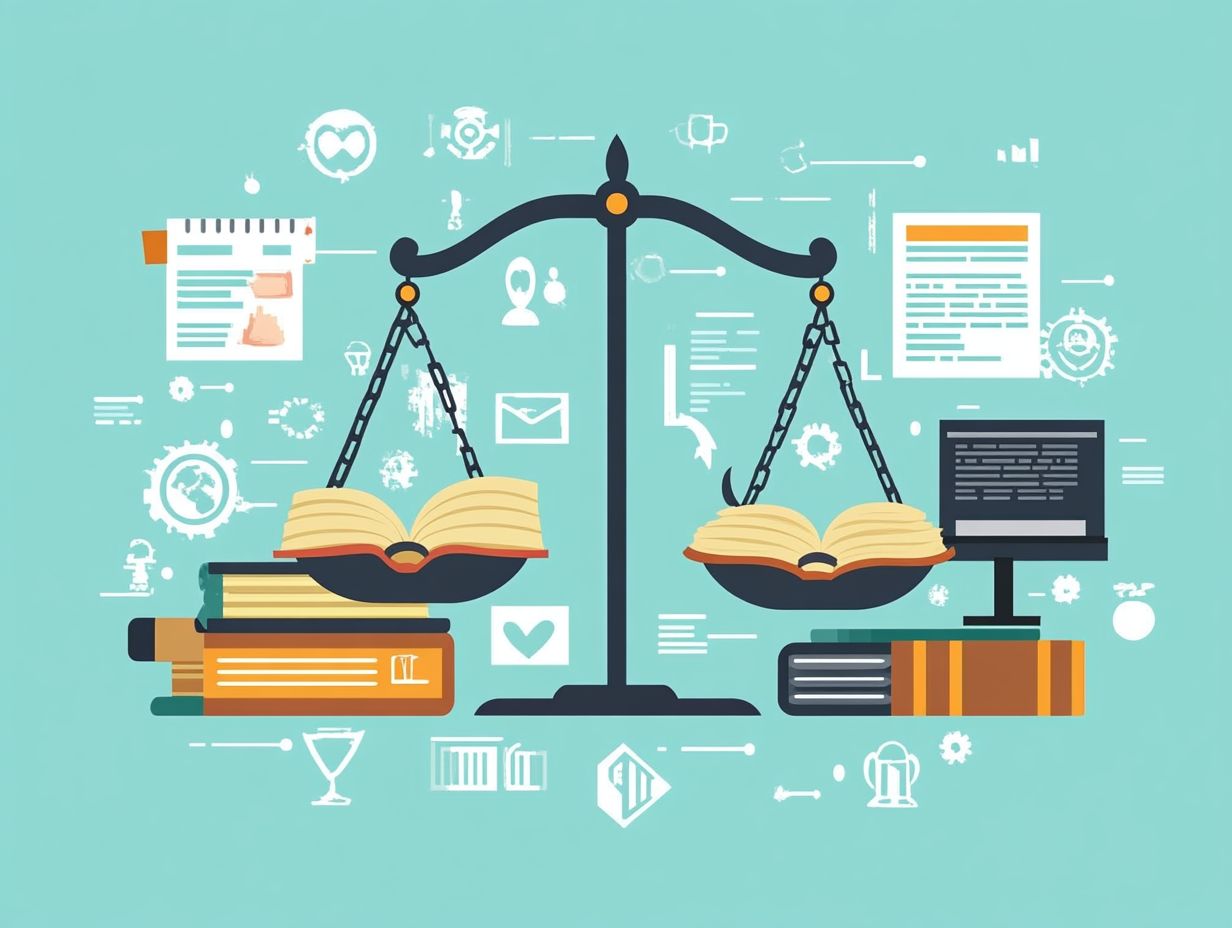
Real-life scenarios involving fair use reveal the intricate nuances of copyright law. Varied uses of copyrighted material can lead to a spectrum of outcomes in court.
Consider the infamous case of Campbell v. Acuff-Rose Music, where the Supreme Court determined that a rap parody of Roy Orbison’s “Pretty Woman” was protected as fair use. Why? Because it offered a transformative perspective and engaged a new audience.
In a similar vein, educators often navigate the complexities of the fair use doctrine when they incorporate excerpts from copyrighted works into their lesson plans.
Take, for example, a notable case where a university faced legal challenges for posting lecture materials online. The courts ultimately sided with the institution, recognizing that these materials served educational purposes and did not harm the market for the original works.
These examples highlight the exciting journey of fair use, reflecting the delicate balancing act between safeguarding artistic rights and encouraging creativity.
How to Properly Use Fair Use
Effectively navigating fair use demands a solid grasp of best practices. It s essential to ensure that your use of copyrighted materials not only complies with legal guidelines but also honors the rights of the copyright holder, all while supporting educational purposes.
Being informed and conscientious in this area will help you make the most of available resources without stepping on anyone’s toes.
Best Practices and Tips
Understanding best practices for fair use is essential as you navigate the landscape of creative projects. It s all about knowing when to seek permission and when you can rely on fair use guidelines.
This knowledge is vital, whether you re an individual creator or part of a larger organization. One misstep could lead to complications you d rather avoid.
For example, if you re using copyrighted material in a blog post, think about how you can transform the original work through commentary or critique this often qualifies as fair use.
However, if you plan to use substantial portions of a song in a promotional video, it s usually best to seek permission.
Familiarizing yourself with the four factors of fair use purpose, nature, amount, and effect on the market will greatly enhance your decision-making process.
When uncertainty looms, reaching out to a legal expert can provide the clarity and peace of mind you need.
Protecting Creativity and Innovation
Protecting creativity and innovation is vital. It helps you understand fair use, which promotes the free flow of ideas and supports public interest.
This principle allows you, as a creator, to build on existing works. You won’t have to worry about legal issues.
This freedom lets you engage with cultural artifacts. It enriches the creative landscape.
Copyright law protects original works. It also helps you engage with and enjoy various artistic and intellectual contributions.
Frequently Asked Questions
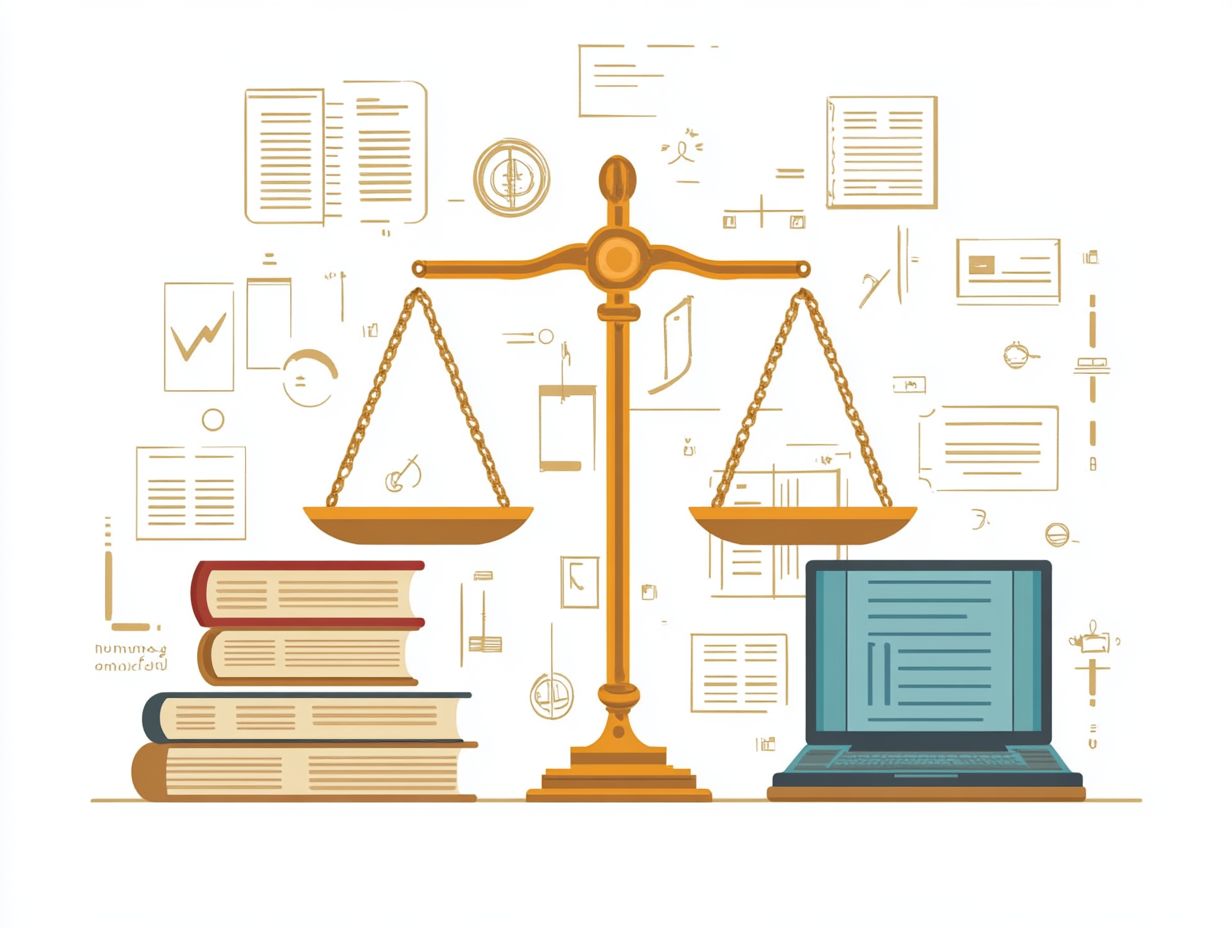
What Is Fair Use in Copyright Law?
Fair use is a legal principle that allows limited use of copyrighted material without permission from the copyright owner or paying fees.
How Is Fair Use Determined?
Fair use is based on four factors: the purpose of use, the nature of the work, the amount used, and the effect on the market for the original work.
What Types of Uses Are Considered Fair Use?
Fair use includes criticism, commentary, news reporting, teaching, scholarship, and research. These uses generally serve the public interest and don t harm the original work s value.
What Are Some Examples of Fair Use?
Examples of fair use are quoting a small part of a book in a review, using a movie clip in a news report, or including a photograph in a scholarly article. These uses are transformative and do not diminish the original work’s value.
Can I Use Any Amount of Copyrighted Material Under Fair Use?
No, fair use examines both the amount and significance of the material used. Using the entire work or a large portion is typically not considered fair use.
Is Fair Use a Defense Against Copyright Infringement?
Yes, if someone claims your use infringes their copyright, you can argue it falls under fair use. However, a court will ultimately decide, and there s no guarantee of a favorable ruling.





